 |
 |
 |
| |
CHECKING IS LACKING: SUBOPTIMAL SURVEILLANCE [38%] FOR HEPATOCELLULAR CARCINOMA IN PATIENTS WITH SUSTAINED VIROLOGIC RESPONSE AFTER DIRECT-ACTING ANTIVIRAL THERAPY FOR HEPATITIS C....GI/liver specialty clinics provided better surveillance
|
| |
| |
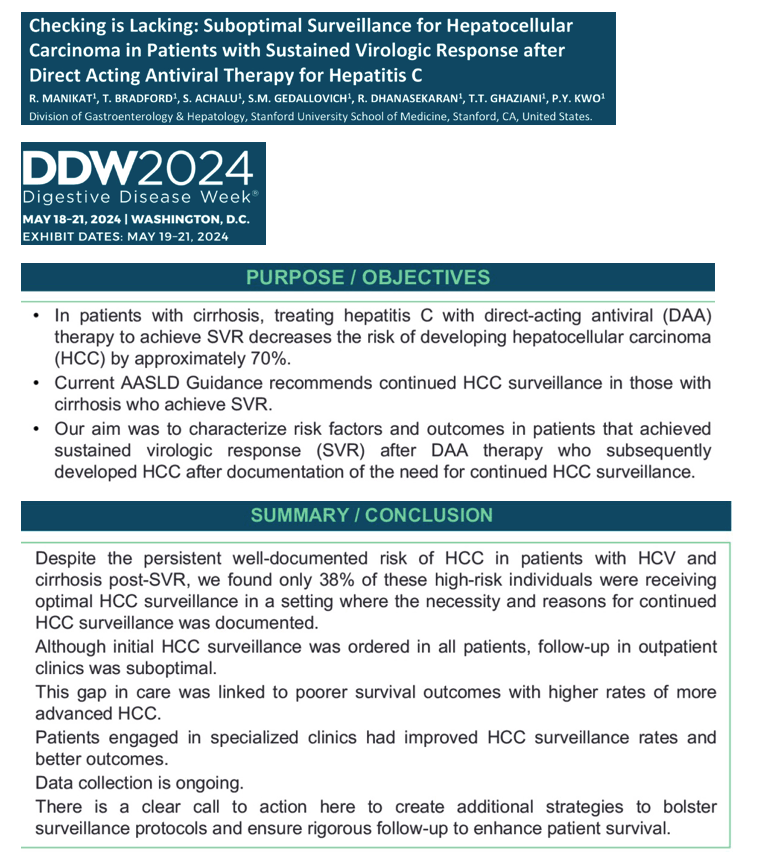
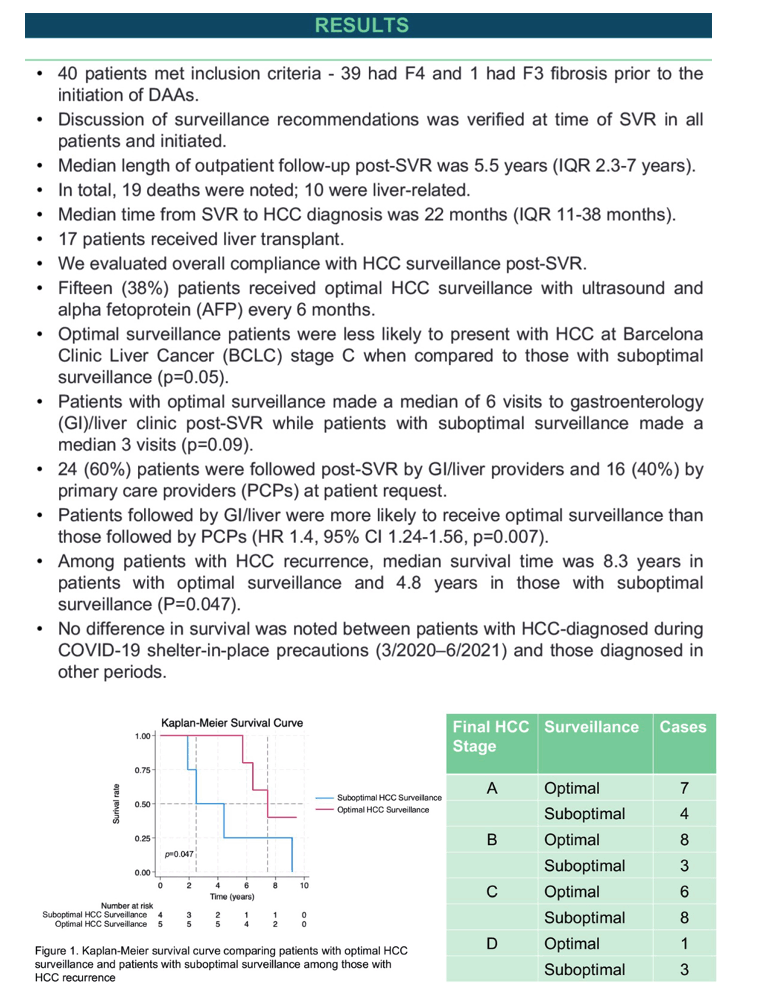
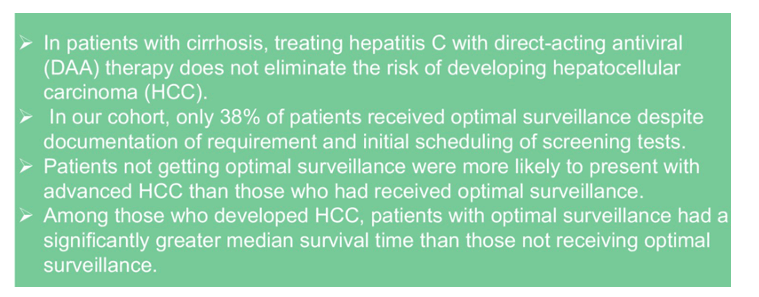
ABSTRACT
Introduction:
In patients with cirrhosis, treating hepatitis C with direct-acting antiviral (DAA) therapy decreases the risk of developing hepatocellular carcinoma (HCC) but does not eliminate it. Our aim was to characterize risk factors and outcomes in patients that achieved sustained virologic response (SVR) after DAA therapy who subsequently developed HCC.
Methods:
Single center clinical data was abstracted on adult patients who met criteria: A) advanced fibrosis (F3-F4) prior to initiating DAA, B) achieved SVR after DAA, and C) were subsequently diagnosed with HCC between 1/2014 to 9/2023. We recorded demographics, HCC surveillance methods, outpatient follow-up, rates of liver transplantation, and patient survival.
Results:
Overall, 40 patients met inclusion criteria - 39 had F4 and 1 had F3 fibrosis prior to the initiation of DAAs. Discussion of surveillance recommendations was documented at time of SVR in all patients.
Median time from SVR to HCC diagnosis was 22 months (interquartile range [IQR] 11-38 months). Median length of outpatient follow-up post-SVR was 5.5 years (IQR 2.3-7 years). In total, 19 deaths were noted; 10 were liver-related. 17 patients received liver transplant.
We evaluated HCC surveillance post-SVR. Fifteen (38%) patients received optimal HCC surveillance with ultrasound and alpha fetoprotein (AFP) every 6 months. These patients were less likely to present with HCC at Barcelona Clinic Liver Cancer (BCLC) stage C when compared to those with suboptimal surveillance (p=0.05). Patients with optimal surveillance made a median of 6 visits to gastroenterology (GI)/liver clinic post-SVR while patients with suboptimal surveillance made a median 3 visits (p=0.09).
24 (60%) patients were followed post-SVR by GI/liver providers and 16 (40%) by primary care providers (PCPs). Patients followed by GI/liver were more likely to receive optimal surveillance than those followed by PCPs (HR 1.4, 95% CI 1.24-1.56, p=0.007).
Median survival time was 8.3 years in patients with optimal surveillance and 4.8 years in those with suboptimal surveillance (P=0.047).
No difference in survival was noted between patients with HCC diagnosed during COVID-19 shelter-in-place precautions (3/2020-6/2021) and those diagnosed in other periods.
Conclusion:
Despite the well-documented risk of HCC in patients with HCV and advanced fibrosis post-SVR, we found only 38% of these high-risk individuals were receiving optimal HCC surveillance. Although initial surveillance was ordered routinely, follow-up in outpatient clinics was substandard. This gap in care was linked to poorer survival outcomes. However, when patients were engaged in specialized clinics, we observed improved HCC surveillance and better outcomes. Data collection is ongoing. There is a clear call to action here to bolster surveillance protocols and ensure rigorous follow-up to enhance patient survival.
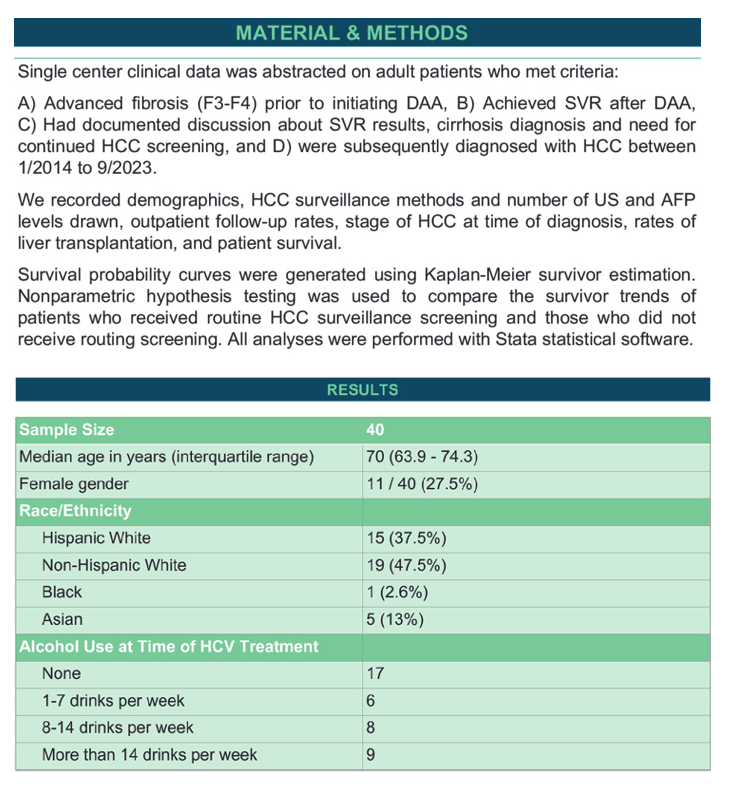
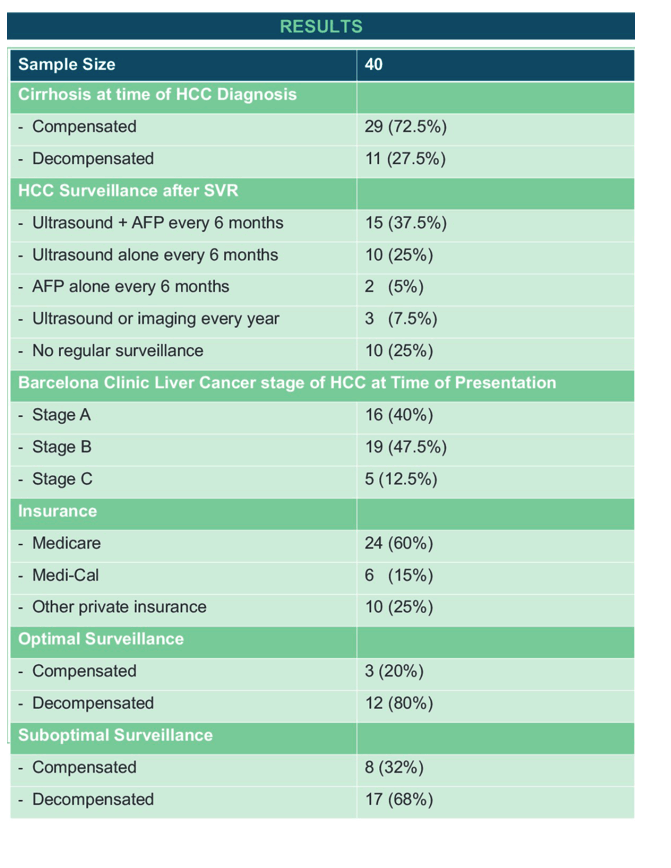
|
| |
|
 |
 |
|
|